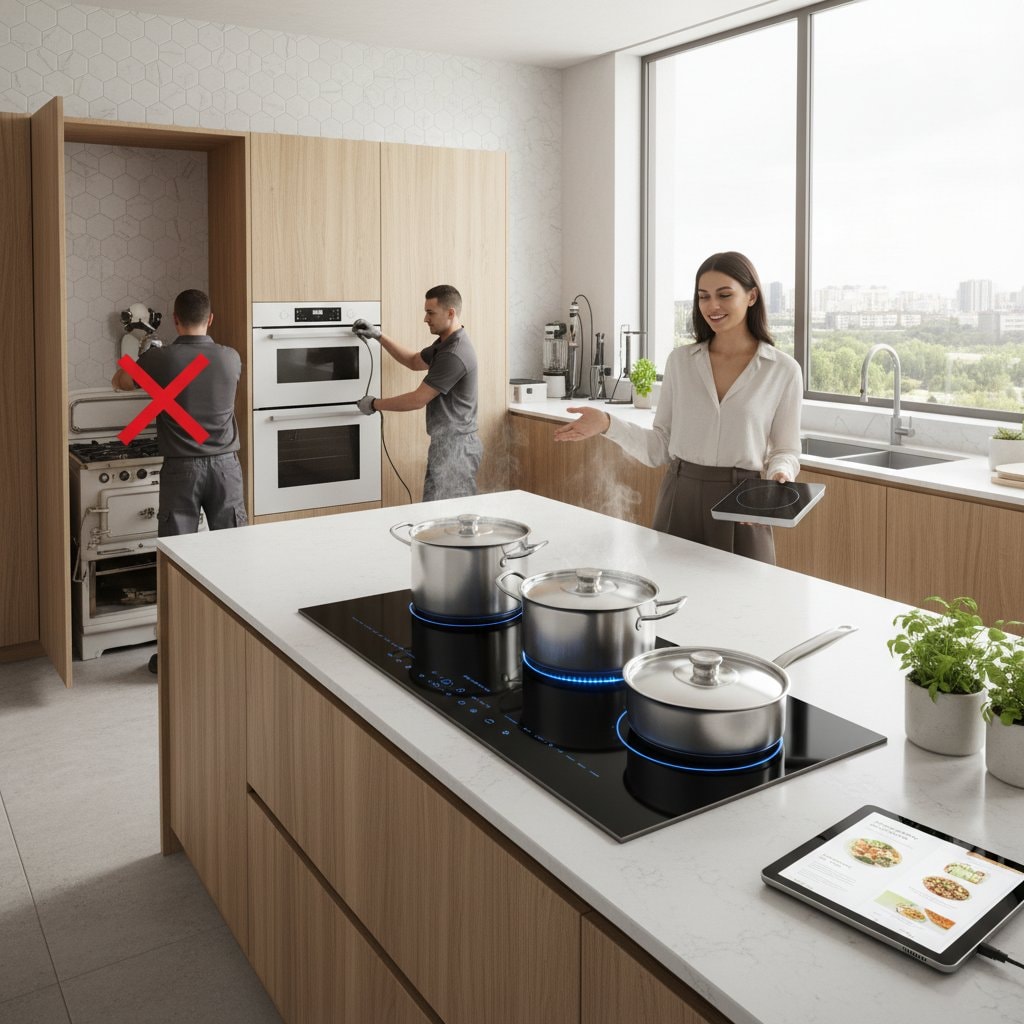Induction Cooktops: Transforming Modern Kitchens
Induction cooktops represent a significant advancement in kitchen technology. They provide rapid heating, enhanced safety, and efficient operation compared to traditional gas or electric stoves. Homeowners increasingly choose induction for its precise control and modern aesthetic, which contribute to cleaner and more sustainable cooking environments.
Understanding Induction Technology
Induction cooktops operate through electromagnetic induction. An alternating magnetic field generates heat directly within compatible cookware, such as pots and pans made of ferrous materials. This process eliminates the need for an open flame or radiant heating element, resulting in minimal heat loss to the surrounding air or surface.
The benefits of this technology include several key advantages:
- Rapid Heating: Water reaches a boil in approximately 50 percent less time than on gas stoves, allowing for quicker meal preparation.
- Precise Temperature Control: Adjustments to heat levels produce immediate responses, enabling accurate simmering or searing without overshooting temperatures.
- Enhanced Safety: The cooktop surface remains at room temperature when not in use with compatible cookware, reducing the risk of burns, especially in households with children or elderly members.
- Energy Efficiency: Up to 90 percent of the energy transfers directly to the food, compared to 40 percent for gas, which lowers utility costs and keeps kitchen temperatures cooler.
Professional chefs value this technology for its reliability during high-volume cooking, while home users appreciate the ease of maintaining consistent results.
Selecting Induction Cooktops by Budget and Needs
Induction options range from compact units to full kitchen integrations, accommodating various budgets and space constraints. Consider factors such as the number of cooking zones, installation requirements, and additional features when making a selection.
For budget-conscious buyers:
- Portable single-burner units cost under $50 and suit renters or supplemental cooking needs. These plug into standard outlets and store easily in cabinets.
Mid-range choices include:
- Built-in two- or four-zone cooktops priced between $300 and $800. They install flush into countertops and offer flexibility for everyday meals.
Premium models feature:
- Full ranges with five or more zones, smart app integration for remote monitoring, and power-sharing capabilities that adapt to multiple pots. Prices start at $1,500 and provide advanced functionalities like automatic pan detection.
To ensure compatibility, verify that cookware responds to a magnet test. Transitioning to induction often requires minimal new purchases, as many existing stainless steel or cast iron pieces work effectively.
Integrating Induction into Kitchen Design
Induction cooktops enhance kitchen aesthetics with their smooth, uninterrupted glass surfaces. They complement materials like quartz, granite, or wood countertops, creating a cohesive and contemporary look. The absence of grates or coils simplifies cleaning; a quick wipe with a damp cloth removes spills before they harden.
Designers recommend flush-mounted installations for a seamless countertop appearance. This approach maximizes usable space and allows for creative backsplash integrations. In custom renovations, position the cooktop near ventilation systems to handle any steam efficiently, though induction produces less ambient heat than gas alternatives.
Navigating Regulations and Long-Term Benefits
Several municipalities now restrict new gas line installations in residential buildings, promoting electric alternatives like induction for improved indoor air quality. Induction eliminates combustion byproducts, such as nitrogen oxides, fostering healthier living spaces. Even in areas without such regulations, the technology aligns with sustainability goals by reducing overall energy consumption.
Homeowners report noticeable improvements in kitchen comfort, with cooler air and quieter operation free from gas hisses or fan noise. Over time, the initial investment yields savings through lower energy bills and extended cookware life due to even heating.
Practical Tips for Induction Success
To optimize performance, maintain cookware in good condition and use appropriately sized pots to cover heating elements fully. Preheat times are negligible, so start cooking immediately upon placing the pan. For safety, activate child-lock features on models with touch controls.
Induction cooktops deliver professional-grade efficiency to everyday kitchens. They support faster routines, safer environments, and stylish designs that endure. Explore local retailers or online specifications to find the model that best fits your cooking style and home layout.









